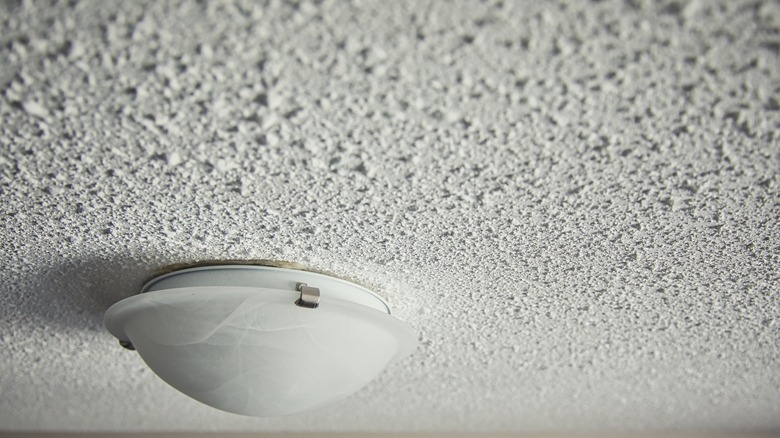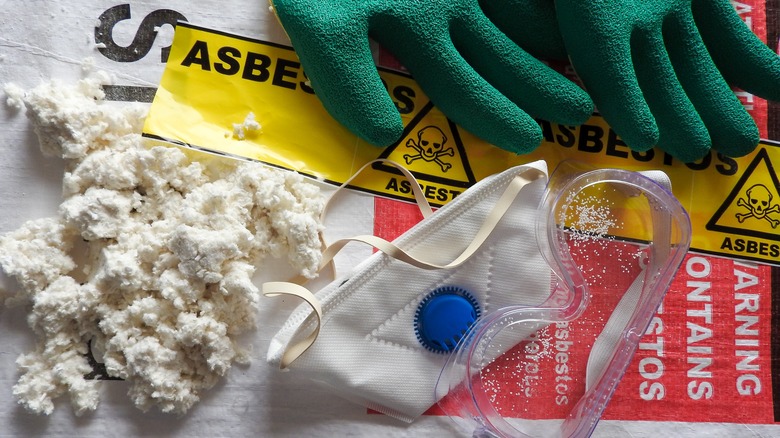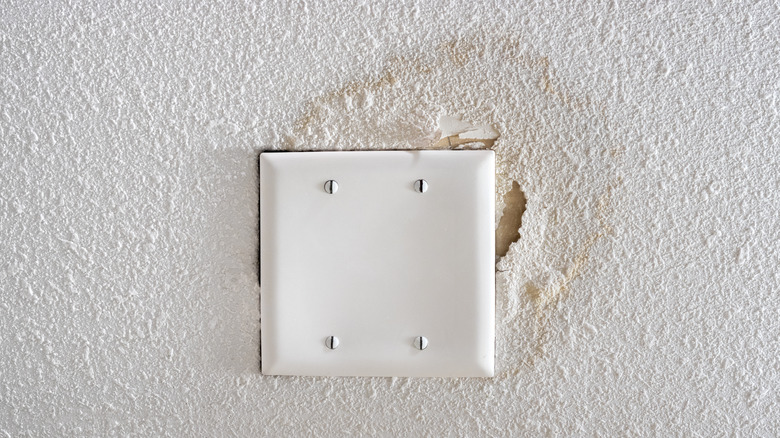The Hidden Downsides Of Popcorn Ceilings
Popcorn ceilings began making appearances in homes in the 1950s, but some sources say the substance and application technique were developed in the 1930s in England. Some liked them, others hated them, and some were indifferent. The same is true today. This bumpy textured ceiling style offered benefits to painters, home builders, and homeowners, which fueled its popularity over the years, but it has a few not-so-alluring qualities, too. Some popcorn ceiling materials contain asbestos, a fiber that can cause potentially fatal health problems in humans, according to the United States Environmental Protection Agency (EPA). Plus, this texture doesn't typically hold up well in high-moisture rooms like a bathroom.
Are you in the process of buying a home with popcorn ceilings that was built in the mid 1900s? These pitfalls may make you want to keep looking, especially when you consider the potential disadvantages to keeping the "popcorn" as it is and to removing it. Yes, popcorn ceilings can be removed, so if you're already living with popcorn ceilings and would rather not, you don't have to. Removal is always an option, but you may want to have a professional tackle the project for you.
They may contain asbestos
There was a time when millions of adults, including doctors and nurses in hospitals, smoked cigarettes, completely unaware of the cancer-causing risks. Popcorn ceilings were no different; the public was not immediately made aware of the asbestos dangers, as the Mesothelioma Research Foundation of America explains. Instead of painting ceilings with a roller, builders opted for a faster, more cost-effective route of spraying a particle mixture that resulted in a rough texture.
Those tiny particles included the silicate mineral asbestos, a fibrous material found naturally in certain rocks and soil that's resistant to corrosion and heat (via EPA). When applied to a ceiling, it also offers some sound absorbing, acoustic benefits. But despite these benefits, these fibers can cause cancers like mesothelioma and lung cancer or a serious lung disease called asbestosis, if inhaled (per the National Cancer Institute).
Although popcorn ceiling particles include only a small percentage of asbestos, no amount of asbestos exposure is considered safe. In the 1950s, the U.S. Government and manufacturers became aware of the carcinogenic nature of this mineral, but the EPA didn't ban it in ceiling coverings until the 1970s (via Mesothelioma.com). So if your home was built in the 1980s or later and has popcorn ceilings, it's unlikely that asbestos is present. Not impossible, but unlikely.
They don't hold up well in high-moisture rooms
Another downside to popcorn ceilings is that they don't last very long in bathrooms and other high-humidity rooms without something going wrong. Remember, a popcorn ceiling is sprayed on with particles, not paint, which means it can be removed. The mixture doesn't permanently adhere to a ceiling surface the way paint does. Over time, the constant humidity from all those hot showers can cause the "popcorn layer" to bubble and peel, but that's not the only possibility.
Mold growth is another potential issue. Popcorn ceilings, with their porous nature, are more likely to become a breeding ground for mold, compared to a flat, painted surface. So even if there isn't asbestos present, being exposed to mold spores on a popcorn ceiling can cause health problems.
Nobody wants to deal with a peeling or moldy popcorn ceiling. While there are ways to help prevent these issues, such as ensuring sufficient ventilation, you may still be inclined to just remove the popcorn covering. However, it's best to leave the work to a professional, because scraping a popcorn ceiling off can increase the risk of asbestos exposure in older homes (1930s-1970s). If the home was built in the late 1900s, you may be able to save some money and remove the popcorn ceiling yourself, since it's much less likely that asbestos is present.


